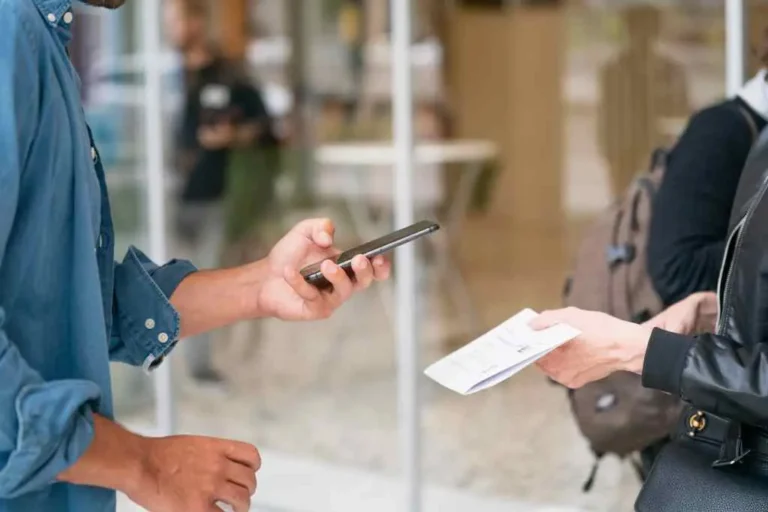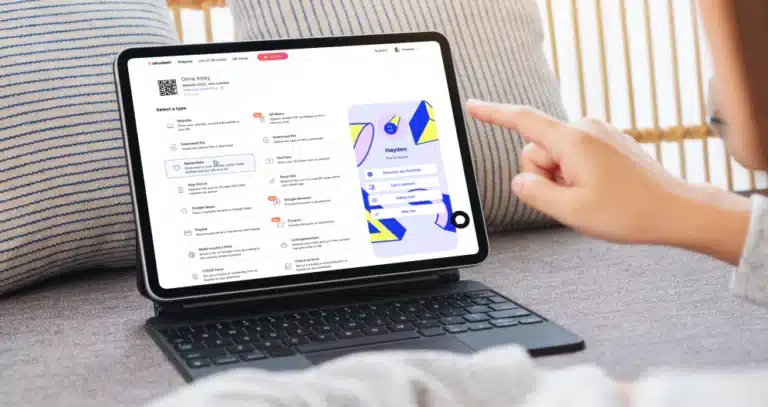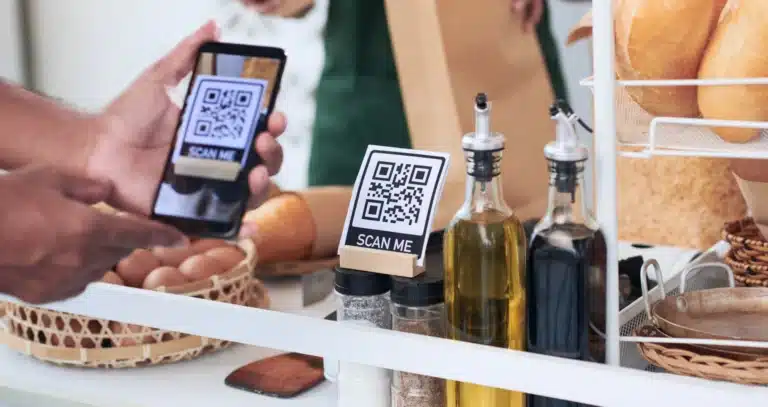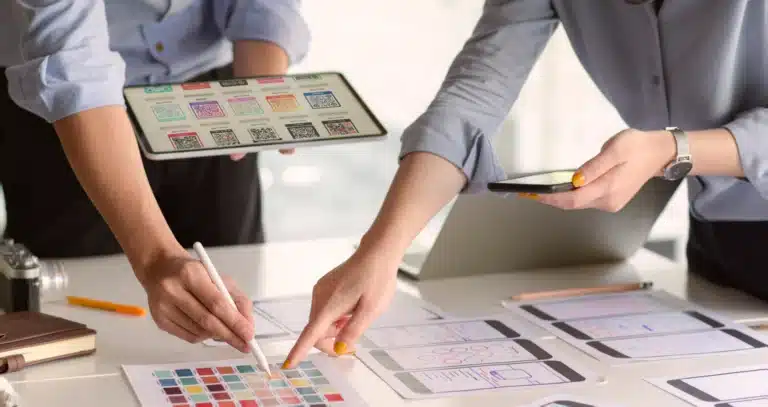The Readers
We talk all the time about QR codes because they’re kind of our thing, but here we would like to talk about that other essential piece of the QR code puzzle: the readers.
What is a QR code reader?
To put it as simply as possible, the tools to read QR codes are like translators.
Just like how someone who knows multiple languages can translate from one language to another, a QR code reader translates the information in the code from robot to human. Okay, so it’s not really robot language, but you can say it is a type of encoded message. In those lines, dots and squares, there is data.
A QR code reader scans the code, extracts the information hidden in all those little shapes and reassembles the information in a language that you can understand.
QR codes can hold information in one of four formats:
- Alphanumeric (letters and numbers)
- Numeric (just numbers)
- Binary (computer code using only 0 and 1)
- Kanji (a type of Chinese characters
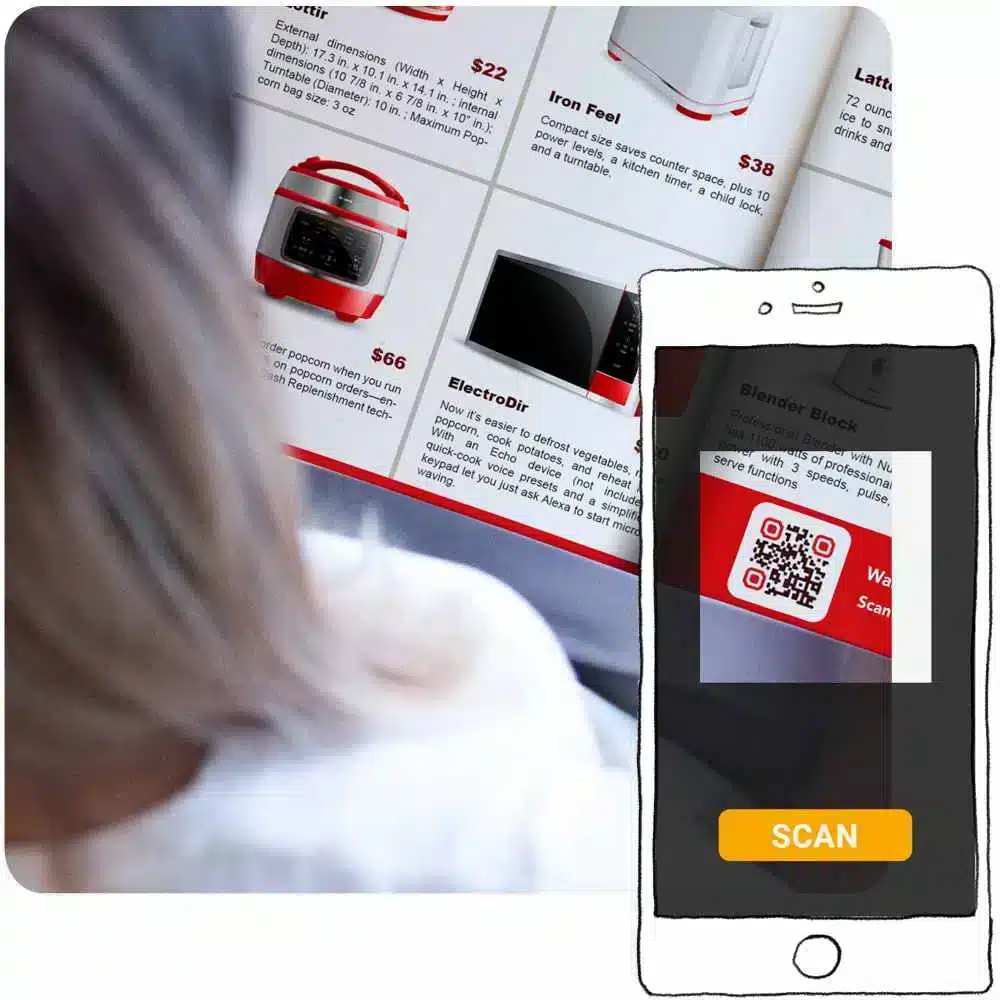
Exactly how the reader does it is a bit too technical to get into here, but it works basically the same way as a scanner at a grocery store when it scans a barcode.
Where can I read QR codes?
Statistically speaking, you probably have a solution to read QR codes already available. In fact, you might even be holding it in your hand right now. Virtually all modern phones come with a QR code reader installed. Generally, it will be bundled with the camera app. If your phone doesn’t automatically recognize and read QR codes, you may have to turn the code reader on by adjusting a setting in the camera app. If you have an older phone or a phone that doesn’t have a reader pre-installed, you can download one from your preferred app store. Many of them are free and easy to install and use.
Your QR code has an abundance of tracking information to share with you. Use the tracking information to create better campaigns and get even more engagement.
What happens when I read QR codes?
The reader “reads” the data in the code and performs the action the data tells it to. That could be opening a landing page, opening a website, opening PayPal or YouTube, opening Whatsapp with a pre-installed message or many other things.
All of this reading and translating is done within a few seconds.
There are certain areas in the codes that are nearly universal for all of them and these areas help the code readers orient themselves and figure out what the code is saying.
QR code areas
Here we have some of the areas:
Position markers
You’ll recognize these as the three larger squares you see in all QR codes. They tell the reader where the edges of the code are.
Timing patterns
These are smaller, alternating dark and light squares that go between the timing patterns that tell the reader where the columns and rows of squares are positioned.
Information type
Areas around the position marker squares tell the reader what kind of information is encoded. For example, if the code is for a URL, a vCard, or something else and if the info is alphanumeric, numeric, etc.
Version number
There are 40 different QR code versions and specific areas near the position markers tell the reader which version the code is if it is a version from 6 to 40. The reader can work out QR code versions from 1-5 using other areas of the code.
Alignment marker
The alignment marker is the smaller fourth square that all QR codes have. Some larger codes have more than one to help the reader align itself to read the information. They help the reader “see” which way is up on the code.
QR smaller squares
Apart from these areas, which are common to all codes, the rest of the smaller squares in a QR code change depending on the information contained within the code. The remaining squares are split into modules, which each contain eight light and dark colored squares that are grouped together.
The reader scans these modules individually and if any part of a module is obscured or damaged, that module is rendered as unreadable. However, having unreadable modules isn’t a problem (up to a point) because of error correction.
Error correction
A fascinating fact about QR codes is they can have up to 30% of the elements in them obscured or damaged and still be read. Isn’t that amazing?
Think about trying to read a book that has 30% of the words blacked out. That would be so frustrating! And, you’d probably not really know what’s going on in the book.
How do QR code readers interpret a code that is damaged or obscured?
The answer is Reed-Solomon error correction, which is a common type of error correcting application in digital communications. It was invented all the way back in 1960 and has been used for many things over the past several decades, including barcodes and QR codes.
Using Reed-Solomon error correction is how tools to read QR codes can scan a code even if it has a logo in it or the squares have been altered into other shapes. (More on that below.)
The amount of your code that can be obscured depends on various factors like the version of the code and how many total squares it contains.
There are four levels of error correction denoted by the letters L, M, Q, and H:
L: 7% of your code can be covered or altered
So, if your code has 120 squares, you’d be able to cover eight or nine of them and still have a readable code.
M: 15% of your code can be obscured or changed
If your code has 120 squares, you’ll be able to cover 18 of them and still have a readable code.
Q: 25% of your code can be covered up or altered
For a 120 squares, you’ll be able to cover up 30 of them while still having a readable code.
H: 30% of the code can be covered or altered
For a code containing 120 squares, you’ll be able to cover up 36 of them and still have a code that can be read.
Checking your QR code
Figuring all this out on your own would be tedious and difficult, so QR Code KIT makes it easy for you by automatically checking your QR code when you add an image or make any alterations to it so you always know if it is still readable. (But, you should always test your code to make sure.)
Images, shapes and color
Error correction is how a QR code reader is still able to scan a code even if you put your logo (or any other image) on it or if you change the shape. We have been using the term “squares” to describe the internal elements of the codes thus far, but aside from the timing and positioning squares, you can actually change the shape of the rest of the little squares within your code.
You can round the edges, make them all dots or turn them into little plus signs (+) if you like. Choose whatever fits your brand best.
Paint your code with your brand’s colors, add a gradient to make it look nice and add your logo to make your code unique. Customized codes are more likely to be scanned, so let your imagination go!
QR code readers are a fabulous little piece of technology
And, since they are usually bundled with a phone’s camera, they’re as ubiquitous as the codes they scan. Now that most folks are carrying a QR code reader in their pocket, that means using QR codes for marketing is a fantastic way to reach your audience and get them to interact with your brand. Brand engagement is just a scan away!
